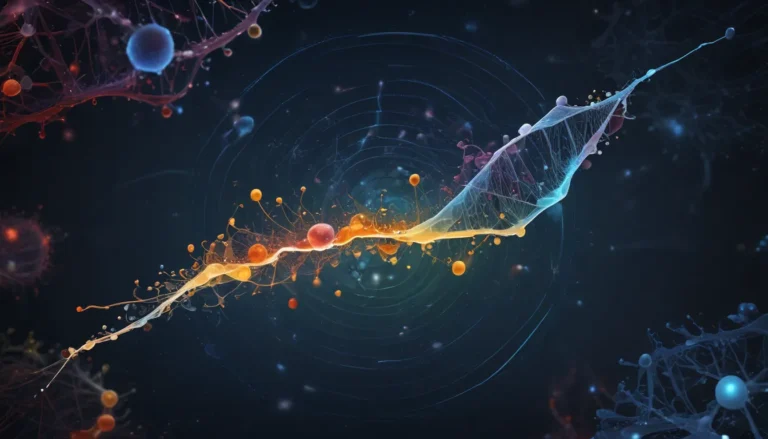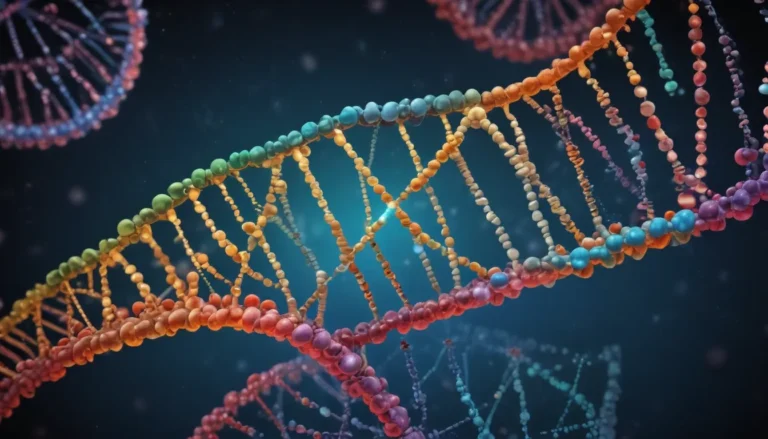A Note About Images: The images used in our articles are for illustration purposes only and may not exactly match the content. They are meant to engage readers, but the text should be relied upon for accurate information.
The intricacies of the human brain are a marvel to behold, with neural circuits serving as the backbone of its operations. These complex networks of interconnected neurons facilitate the transmission of electrical signals, allowing us to perceive sensory information, control our movements, and process thoughts and emotions. Delving into the realm of neural circuits unveils a world of captivating facts that underscore their significance and incredible capabilities. From the fundamental principles of neuronal communication to the role of plasticity in shaping our brain’s connections, let’s embark on a journey to unravel the mysteries of neural circuits.
Understanding Neural Circuits: The Brain’s Superhighways
Neural circuits can be likened to the brain’s superhighways, orchestrating the intricate dance of our movements, senses, and thoughts. These networks possess the remarkable ability to adapt and change, but disruptions in their functioning can lead to serious neurological disorders. Neurons within these circuits act as messengers, relaying crucial information through synapses. It is essential to grasp the nuances of neural circuits to effectively address brain-related conditions such as Alzheimer’s and depression.
Unveiling the Building Blocks: Neural Circuits in Action
Neural circuits serve as intricate networks of interconnected neurons that facilitate communication and information processing within the brain and spinal cord. These fundamental units, known as neurons, are specialized cells that transmit electrical and chemical signals, playing a pivotal role in the processing and transmission of information.
Deciphering Behavior and Cognitive Functions: The Role of Neural Circuits
Neural circuits play a vital role in controlling a myriad of behaviors and cognitive functions, including memory, learning, perception, and motor control. These intricate networks orchestrate the symphony of our brain’s operations, shaping our experiences and interactions with the world.
Embracing Plasticity: The Adaptive Nature of Neural Circuits
One of the most captivating aspects of neural circuits is their ability to exhibit plasticity, allowing them to modify their structure and function in response to experiences, learning, and environmental changes. This neural plasticity serves as a cornerstone for adaptation and development, highlighting the dynamic nature of the brain’s connections.
Navigating External Stimuli: Sensory Neural Circuits at Work
Specific sensory neural circuits play a pivotal role in receiving and processing information from the external world. These circuits enable us to perceive and interpret sensory stimuli ranging from sight and sound to taste, touch, and smell, enriching our understanding of the environment.
Orchestrating Movement: Motor Neural Circuits in Action
Motor neural circuits take center stage in coordinating and regulating voluntary and involuntary movements. These circuits ensure precise control over muscles and body movements, enabling us to navigate the physical world with finesse and accuracy.
Embracing Feedback Loops: Refinement and Error Correction
Neural circuits often form feedback loops, where signals are sent back to earlier stages in the circuit. This intricate mechanism allows for refinement, adjustment, and error correction in the processing of information, highlighting the dynamic nature of neural communication.
Synaptic Communication: The Role of Neurons in Neural Circuits
Neurons within neural circuits communicate through synapses, specialized junctions where electrical and chemical signals are transmitted between cells. This intricate mode of communication underpins the seamless functioning of neural circuits, facilitating the relay of vital information.
Unraveling Disorders: The Impact of Neural Circuit Disruptions
Disruptions in neural circuits can have far-reaching consequences, leading to neurological and psychiatric disorders such as Alzheimer’s disease, Parkinson’s disease, epilepsy, and depression. Understanding the intricacies of these disruptions is crucial for advancing our knowledge of brain function and informing potential therapeutic interventions.
Conclusion: Unveiling the Mysteries of Neural Circuits
Neural circuits stand as captivating entities that offer invaluable insights into brain function and behavior. These intricate networks of interconnected neurons shape our thoughts, emotions, and actions, serving as the foundation of our cognitive processes. By exploring the complexities of neural circuits, we can gain a deeper understanding of neurological disorders and pave the way for innovative therapeutic approaches.
FAQs: Navigating the Realm of Neural Circuits
-
What exactly is a neural circuit?
A neural circuit is a network of interconnected neurons that collaborate to process and transmit electrical signals within the brain and nervous system. -
How do neural circuits form?
Neural circuits form through synaptogenesis, where connections known as synapses are established between individual neurons, facilitating communication and information processing. -
Can neural circuits change and rewire?
Yes, neural circuits possess the remarkable ability to change and rewire through synaptic plasticity, enabling learning, memory formation, and adaptation to new experiences. -
What role do neural circuits play in behavior?
Neural circuits play a pivotal role in controlling and coordinating behavior, providing communication pathways that enable the brain to perceive the world, make decisions, and initiate actions. -
Do neural circuits play a role in neurological disorders?
Disruptions in neural circuits have been implicated in various neurological disorders such as epilepsy, autism, and schizophrenia, underscoring the importance of understanding these circuit dysfunctions for improved diagnosis and treatment options. -
How do scientists study and map neural circuits?
Scientists employ a range of techniques, including imaging methods, genetic labeling, and electrophysiological recordings, to study and map neural circuits. These methods aid in identifying specific connections and understanding the functional properties of individual neurons within a circuit. -
Can neural circuits be targeted for therapeutic interventions?
Researchers are actively exploring ways to modulate neural circuits for therapeutic purposes, with techniques such as deep brain stimulation and optogenetics showing promise as potential treatments for neurological and psychiatric disorders. -
Are neural circuits unique to humans?
No, neural circuits exist in all animals with a nervous system, with variations in complexity and organization. The fundamental principles of neural circuitry are conserved across species, highlighting their universal significance. -
Why are neural circuits considered captivating?
Neural circuits captivate us due to their role in unraveling the fundamental workings of the brain. Exploring these intricate networks offers insights into cognition, behavior, and consciousness, providing a glimpse into the awe-inspiring complexity of the human brain.
Embark on a journey of discovery into the mysteries of neural circuits, unlocking the secrets of brain function and behavior. As we delve deeper into the complexities of these intricate networks, we gain a newfound appreciation for the astounding capabilities of the human brain. Let curiosity be your guide as you continue to explore the fascinating realm of neuroscience, unravelling the mysteries that lie within the captivating world of neural circuits.






